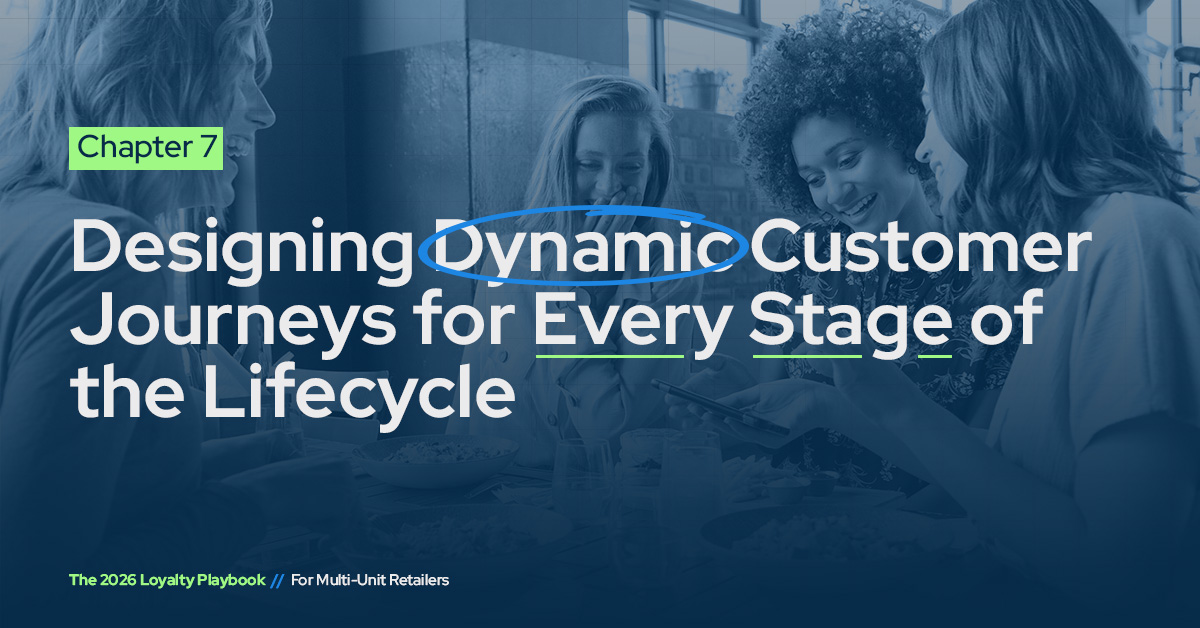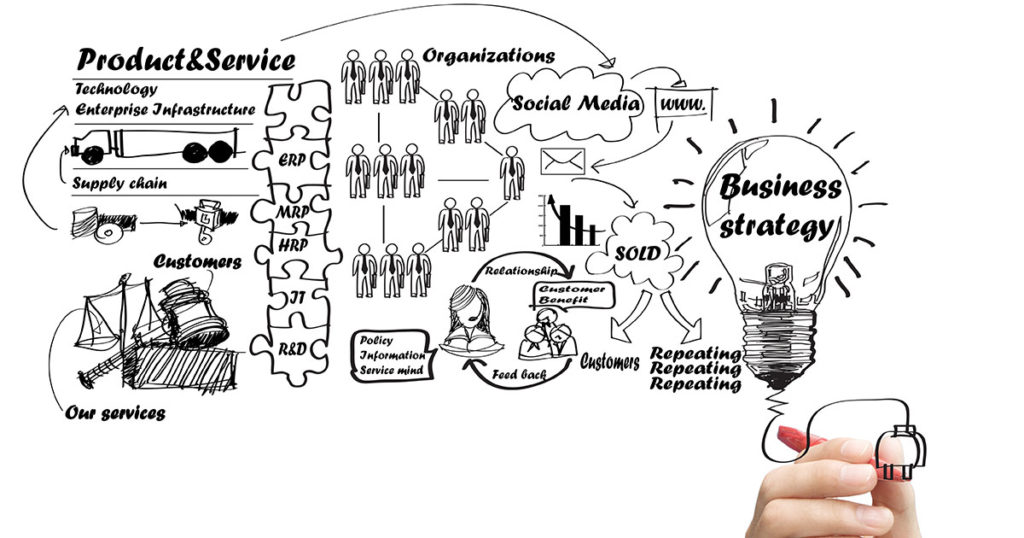Audience Science helps brands understand who customers are and what motivates them. The next step is putting that understanding into motion. Journey Mapping turns insight into interaction, designing personalized experiences that adapt to where each customer is in their lifecycle.
Too often, customer journeys are built like assembly lines: a welcome email, a coupon, a reminder, then silence. But customers are not linear. Their needs shift across devices, locations, and moments. A static map cannot keep up.
According to Adobe’s Digital Trends Report, brands that design dynamic, adaptive customer journeys outperform competitors in engagement by 36 percent. Static automation is not enough; dynamic orchestration keeps loyalty alive.
What Dynamic Journey Mapping Looks Like
Imagine a customer who places their first order online. The system triggers a welcome series that introduces rewards and includes an “Order Again” call-to-action featuring the exact pizza they purchased.
After their second visit, the system recognizes the pattern and delivers an in-app bonus encouraging them to try a new topping. Because this repeat order happens within three days, the customer is flagged as high-potential and receives a higher-value reward.
Their journey logic now adapts. As a high-potential member, their lapse window is shorter than that of a new, low-engagement customer. If they go quiet, a “We Miss You” message with a premium discount is triggered after seven days instead of the standard fourteen. The reactivation sequence follows their preferred engagement order—first push, then email, then SMS—based on the channels where they have shown the most activity.
Each action informs the next step, and every message is context-aware, personalized, and responsive to real behavior.
“Your marketing has to be fluid. It needs to move just like your customer is moving throughout their day. A static, one-size-fits-all approach will not succeed in the long run” says Andy Locke, Director of Strategy & Data at Response Labs.
How to Build Dynamic Journeys
Static journeys are predictable, but they are also fragile. They follow a fixed path that assumes every customer behaves the same way. That kind of automation might save time, but it often wastes opportunity. When customers engage across multiple channels and move at their own pace, static workflows fail to keep up.
Dynamic journey mapping solves that problem. Instead of forcing customers through a rigid sequence, it listens for signals, adapts to behavior, and delivers the next best action automatically. It transforms marketing from a calendar-based schedule into a continuous, intelligent dialogue.
This shift is more than technical. Dynamic journeys convert data into momentum. They improve retention by identifying drop-off points before they happen. They increase order frequency by delivering relevant nudges when interest peaks. And they strengthen customer relationships by creating a consistent, human experience across every touchpoint.
To bring dynamic journeys to life:
1. Establish the measurement model
Define value tiers and lifecycle parameters before building anything. Set your RFM or equivalent value model, assign thresholds for New, Onboarding, Engaged, At-Risk, Lapsed, and Reactivated, and document trigger guardrails such as minimum days since last order, frequency bands, and AOV ranges. Identify primary KPIs for each stage such as second-order rate, time to second order, frequency uplift, average order value, and churn rate.
2. Audit and unify the data
Confirm that you can capture and join the signals you need across POS, app, e-commerce, delivery, and CRM. Validate field definitions, event timestamps, identity resolution, and consent flags so journey logic can run reliably.
3. Map every stage of the lifecycle
Design clear paths for acquisition, activation, engagement, and reactivation. For each stage, define the entry conditions, the primary objective, the exit criteria, and the failover logic if the customer does not respond.
4. Leverage behavioral signals
Trigger communications from real actions such as app logins, order frequency, basket size, category preferences, and time since last purchase. Pair each trigger with intent and value tier so high-value customers receive different cadence and offers than low-value customers.
5. Incorporate real-time data
Sync loyalty, CRM, and POS so new interactions update profiles instantly and influence the next message, offer, and channel. Confirm latency targets for key events like order completion, refund, and reward redemption.
6. Automate intelligently
Use platforms like Salesforce Journey Builder to deliver personalized messages at scale. Encode channel preferences and throttling rules. Build variants by value tier and lifecycle stage.
7. Test and optimize
Stand up a test plan with control cells, offer and cadence tests, and channel sequencing tests. Monitor leading indicators such as click-through and add-to-cart rates along with outcome metrics such as repeat rate, time between orders, and incremental revenue.
8. Review and evolve
Run recurring diagnostics to recalibrate tier thresholds, refresh lifecycle definitions, and retire underperforming triggers. Feed results back into your segmentation and creative to keep the system aligned with current customer behavior.
Dynamic journey mapping does not replace human strategy. It amplifies it. When automation reacts to intent instead of rules, brands stop managing campaigns and start orchestrating relationships.
The Role of Emotion in Automation
The most effective journeys do more than automate—they communicate empathy. When a guest is recognized, rewarded, and re-engaged with relevance, it feels human.
A study from PwC’s Future of Customer Experience Report found that 82 percent of consumers want more personal interaction from brands, even in digital environments. Automation does not eliminate the human element; it amplifies it.
Conclusion
Journey Mapping is where loyalty strategy becomes reality. It connects insights to experiences and behaviors to emotions. When marketers design adaptive, customer-centered journeys, they transform one-time purchases into ongoing relationships.
Discover more in The Loyalty Playbook for insights on unifying data such as Moving Beyond Demographics to Predictive and Behavioral Segmentation in Chapter 6.
If you’re ready to transform your loyalty program into a true growth program, we’re here to help. Contact us today to talk about how to get started.




